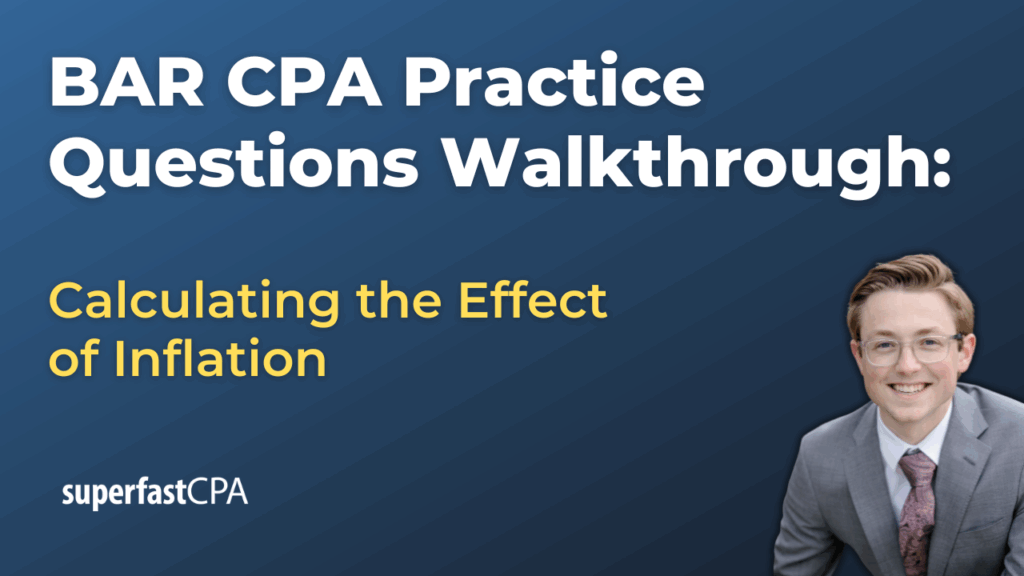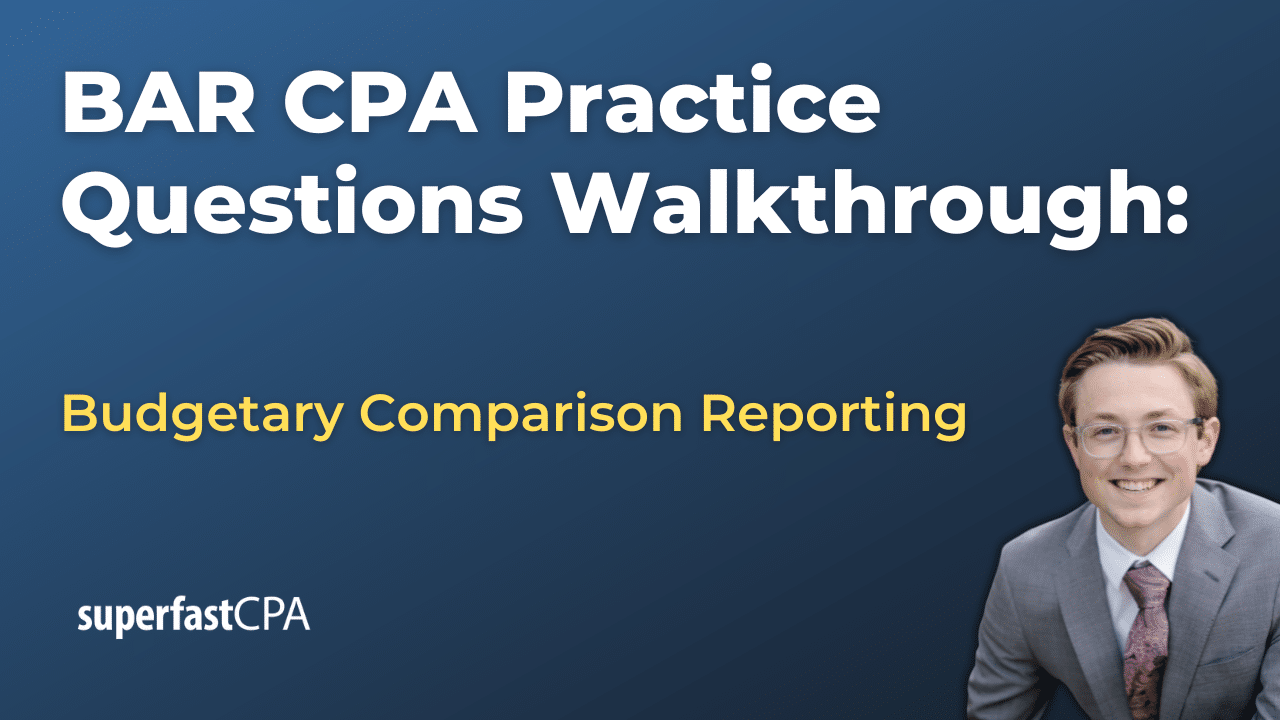In this video, we walk through 5 BAR practice questions teaching about calculating the effect of inflation. These questions are from BAR content area 1 on the AICPA CPA exam blueprints: Business Analysis
The best way to use this video is to pause each time we get to a new question in the video, and then make your own attempt at the question before watching us go through it.
Also be sure to watch one of our free webinars on the 6 “key ingredients” to an extremely effective & efficient CPA study process here…
Calculating the Effect of Inflation
Inflation influences nearly every financial decision, from the price of goods to the cost of repaying a loan. While dollar amounts may remain constant on paper, their real value can shift significantly over time due to changes in purchasing power. For candidates preparing for the CPA Exam—and for professionals working in budgeting, investing, and financial reporting—being able to calculate the effect of inflation is critical.
The following sections provide a structured overview of how to evaluate the real economic impact of inflation on prices, debt obligations, future spending, and investment returns.
Distinguishing Between Nominal and Real Price Changes
Inflation makes it necessary to separate nominal price changes from real ones. A nominal price is the stated amount at a point in time, while a real price accounts for changes in purchasing power.
For instance, if a product increased in price from $200 to $220 over one year, that reflects a 10% nominal increase. However, if inflation during that year was 5%, the real increase in cost is only:
Real change ≈ Nominal change – Inflation rate
Real change ≈ 10% – 5% = 5%
This means the actual economic increase is only 5%, not 10%. On the CPA Exam, this “approximate method” is typically the expected approach unless a question specifies using a compounded calculation.
Converting Future Costs into Present Dollars
Understanding what a future payment is worth in today’s terms is another essential application. To adjust a future amount for inflation and find its real (present) value, use the following formula:
Real value = Future value ÷ (1 + inflation rate)ⁿ
Where ⁿ represents the number of years into the future.
For example, a company expects to pay $1,620 for a contract next year. If inflation is 5%, the real cost is:
$1,620 ÷ 1.05 = $1,543
This tells us that, when adjusted for inflation, the $1,620 payment in one year has the same purchasing power as $1,543 today.
Evaluating the Real Cost of Loan Repayments
Inflation affects debt repayments, especially when the loan carries a fixed interest rate. In such cases, the real cost of repaying the loan can be calculated by adjusting the nominal repayment for inflation.
Suppose a borrower takes out a $10,000 loan at a 4% annual interest rate. After one year, they repay $10,400. If inflation for the year is 3%, the real repayment amount is:
$10,400 ÷ 1.03 ≈ $10,097
This result means the lender received $10,400 in nominal terms, but it’s only worth $10,097 in today’s dollars. Inflation reduced the real value of the repayment.
The takeaway is that borrowers benefit when inflation is higher than their loan’s interest rate, while lenders benefit when inflation is lower.
Understanding Long-Term Debt and the Erosion of Real Value
When a debt obligation is repaid several years in the future, inflation can have a more pronounced effect. Consider a company that agrees to repay $60,500 in three years for a $50,000 loan. If inflation is 3% annually, the real cost of that future repayment is:
$60,500 ÷ (1.03)³ ≈ $55,514
This means the borrower’s actual economic burden—measured in today’s dollars—is $55,514, even though they will repay $60,500 in nominal terms.
This concept is important in assessing long-term liabilities. A repayment amount that looks large on paper may be significantly smaller when adjusted for inflation.
Projecting Future Prices Using Inflation
Professionals also need to estimate future costs based on today’s prices and expected inflation. This is especially relevant for long-term planning, such as capital purchases, tuition costs, or investment in infrastructure.
The formula used is:
Future price = Present price × (1 + inflation rate)ⁿ
For instance, if a piece of equipment costs $80,000 today and inflation is expected to be 4% annually for three years, its expected cost in year three would be:
$80,000 × (1.04)³ ≈ $89,344
This calculation helps organizations prepare realistic budgets that reflect future purchasing power.
Forecasting Future Expenses in Practical Settings
Consider a parent planning to pay for college tuition that currently costs $13,500. With an expected 5% annual increase over the next three years due to inflation, the projected cost will be:
$13,500 × (1.05)³ = $15,625
This insight is vital for long-term financial planning and allows families and businesses to save with inflation-adjusted targets in mind.
Summary
Inflation affects the value of money over time, making it critical to adjust both costs and revenues to reflect their real value. Professionals must be able to:
- Distinguish between nominal and real changes in prices
- Adjust future payments and obligations into present value terms
- Assess how inflation affects loan repayments and investment performance
- Forecast future expenses based on current prices and projected inflation
By mastering these calculations, financial professionals can provide more accurate guidance, evaluate true financial impacts, and make decisions based on economic reality rather than face-value figures.









